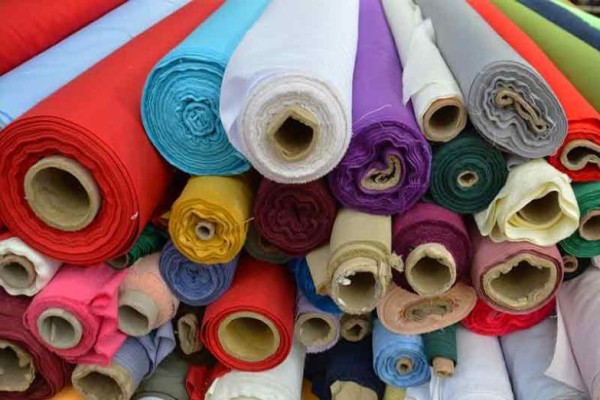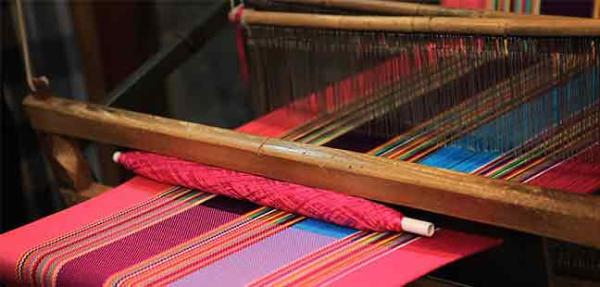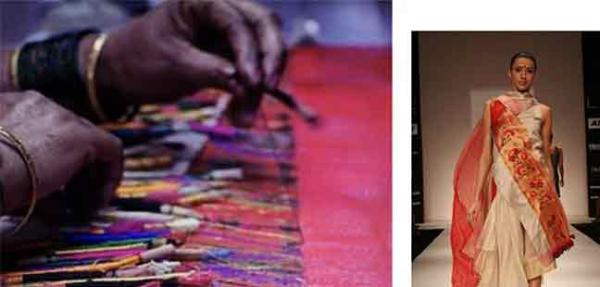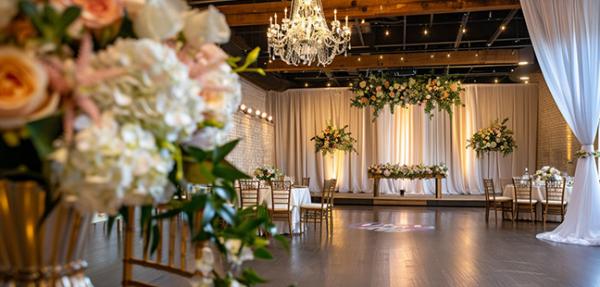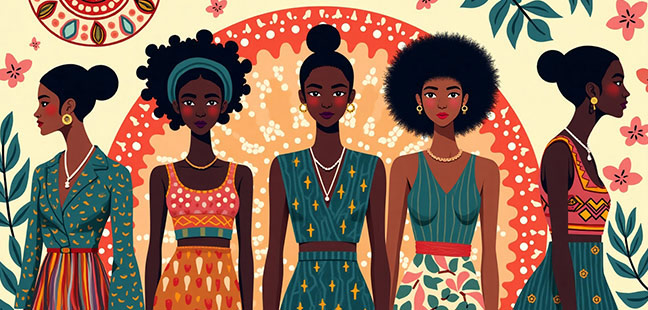
Table of Contents:
What is Cultural Influence in Fashion?
What is Cultural Appropriation?
How to Design with Cultural Sensitivity?
Research Thoroughly
Collaborate with the Community
Respect Sacred Symbols and Practices
Give Credit and Acknowledge Sources
Avoid Stereotypes and Clichés
Consider Modern Relevance
Engage in Open Dialogue
Avoid Profit-Driven Appropriation
Be Mindful of Global Sensitivities
Stay Updated on Trends and Discussions
Conclusion
Fashion and Culture are like Juno’s Swans, always existing together and influencing one another. Without the influence of culture, fashion can become quite rudimentary over time, after all culture influences clothing, accessories, materials, and even social movements. Its impact is truly profound!
However, let us not forget we now live in hypersensitive world where one mistake can become viral within seconds! To imbibe culture in fashion is to imbibe a history of meanings and significance, and with that comes the risk of cultural appropriation. Cultural sensitivity with a profound understanding of traditional knowledge and equitable approach is required to navigate in today’s world of fashion. Let us explore how one can unfurl creativity in fashion and design with cultural sensitivity. Read to know more!
Become future-ready with our Fashion Programs
Know MoreWhat is Cultural Influence in Fashion?
Our clothing styles, designs, textures, and overall fashion trends are not set in vacuum! As a matter of fact, they are influenced by society’s beliefs, traditions, and customs, known as Cultural Influence in Fashion. For example, Indian fashion is rich with traditional garments like sarees, lehengas, salwar kameez, dhotis, and kurtas. These are often adorned with intricate embroidery, beadwork, and handwoven textiles—learn more about the different types of fabrics used in fashion design and their cultural significance.
Other than Bollywood being a being trend-setter, the Indian fashion industry is also influenced by cultural and religious sentiments, ensuring that attire aligns with societal norms. For example, certain clothing styles may be more modest to respect religious beliefs, while others highlight the grandeur and opulence celebrated in specific cultural events.
Indian fashion is a vibrant tapestry woven from the country’s rich cultural heritage. It blends the past with the present, showcasing regional diversity, traditional artistry, and a seamless adaptation of modern influences to maintain its unique identity in the global fashion landscape.
What is Cultural Appropriation?
Adopting aspects of another culture without appreciating or comprehending their significance is known as cultural appropriation, and it results in the commercialization and distortion of cultural symbols. This frequently hides the actual cultural background and perpetuates prejudices.
Did you know?
The Victoria’s Secret fashion show faced backlash for featuring a model wearing a Native American headdress, which is a sacred and ceremonial item in many Indigenous cultures? The use of the headdress as a fashion accessory was seen as trivializing the deep cultural and spiritual meaning it holds.
How to Design with Cultural Sensitivity?
Designing with cultural sensitivity involves creating fashion, products, or content that respect and honour the cultural elements being used. Here’s how to approach design with cultural sensitivity:
1. Research Thoroughly
- Understand the Culture: Before using any cultural elements, immerse yourself in understanding their history, significance, and current meaning. Research traditional practices, symbols, and attire to ensure you are well-informed.
- Engage with Cultural Experts: Collaborate with historians, cultural scholars, or members of the community to get accurate insights and avoid misinterpretation.
2. Collaborate with the Community
- Involve Artisans and Creators: Work directly with artists, designers, or craftspeople from the culture. This not only enriches your design but also empowers the community and gives credit where it is due.
- Fair Compensation: Ensure fair pay and recognition for any cultural knowledge or craft you incorporate into your designs.
3. Respect Sacred Symbols and Practices
- Avoid Religious or Sacred Elements as Trends: Using items like religious symbols, traditional headdresses, or sacred art for mere aesthetic purposes can be deeply disrespectful. Recognize which elements are sacred and handle them with care.
- Be Mindful of the Context: Understand the occasions for which certain designs or symbols are appropriate. For example, using a motif that is worn during religious or mourning ceremonies may not be suitable for casual wear.
4. Give Credit and Acknowledge Sources
- Acknowledge Inspiration: Publicly acknowledge when a design is inspired by a particular culture. This helps maintain transparency and shows respect for the origins of the idea.
- Celebrate, Don’t Appropriate: Ensure that your designs are celebrating the culture rather than exploiting it for profit or popularity.
5. Avoid Stereotypes and Clichés
- Challenge Stereotypes: Stay away from using motifs or themes that reinforce negative or limiting stereotypes. Represent cultures in a way that celebrates their diversity and richness.
- Stay Authentic: Rather than relying on overused symbols or clichés, seek deeper cultural elements that can be incorporated meaningfully.
6. Consider Modern Relevance
- Blend Tradition with Modernity: When designing with traditional elements, consider how they can be incorporated into modern contexts without losing their cultural significance.
- Reflect Cultural Changes: Cultures evolve, so ensure that the design reflects the current state of the culture and does not rely solely on outdated or traditional elements.
7. Engage in Open Dialogue
- Feedback Loops: Allow members of the culture to provide feedback during the design process. This can help catch potential issues and ensure that the design is respectful.
- Be Open to Criticism: If someone from the culture raises concerns, be willing to listen and make changes. Acknowledging and addressing concerns shows that you are committed to cultural respect.
8. Avoid Profit-Driven Appropriation
- Benefit the Source Culture: If your design or product is successful, consider ways to give back to the culture you are inspired by. This could be through donations, partnerships, or initiatives that support cultural preservation.
- Educational Campaigns: Use your platform to educate your audience about the culture, helping to foster appreciation and understanding.
9. Be Mindful of Global Sensitivities
- Cross-Cultural Contexts: If designing for an international market, be aware that what might be acceptable in one culture could be insensitive in another. Research different cultural norms if your product will be distributed globally.
10. Stay Updated on Trends and Discussions
- Keep Learning: Cultural sensitivity is an ongoing process. Stay informed about global cultural discussions, shifts in cultural identity, and the feedback on other designs that have faced criticism.
- Observe Ethical Practices: Align your brand or design ethos with global movements supporting ethical fashion and cultural preservation.
Designing with cultural sensitivity not only helps avoid potential backlash but also fosters a deeper, more meaningful connection with diverse audiences. It showcases your brand’s commitment to respect, inclusion, and cultural appreciation.

Student Guidance Center: Our Counselors are Just a Click Away.
Conclusion
As we look to the future, the merging of fashion and cultural sensitivity promises an industry that is more creative, inclusive, and sustainable. Fashion design is no longer just about fabric and form; it’s a field that embraces traditions, cultural significance, and boundless possibilities. Ready to shape the future of fashion? Discover Pearl Academy’s Fashion Programs and join the movement that’s transforming the world of design. Fashion’s future isn’t waiting—it’s here. Step into it and see where it takes you.
Also Read:
Pearl Academy Editorial Team
Tags
- #Fashion
Pearl Admission Enquiry
Trending Post
-
![https://pearlproductioncdn-angdc5fwcje2hzgs.z01.azurefd.net/drupal-files/2025-04/Fashion-Designing-Courses-After-12th_130x125.webp https://pearlproductioncdn-angdc5fwcje2hzgs.z01.azurefd.net/drupal-files/2025-04/Fashion-Designing-Courses-After-12th_130x125.webp]()
-
![https://pearlproductioncdn-angdc5fwcje2hzgs.z01.azurefd.net/drupal-files/2025-05/Short-Term-Fashion-Designing-Courses_130x125.webp https://pearlproductioncdn-angdc5fwcje2hzgs.z01.azurefd.net/drupal-files/2025-05/Short-Term-Fashion-Designing-Courses_130x125.webp]()
Kickstart Your Career with Short-Term Fashion Designing Courses
2025-05-14By Pearl Academy Editorial Team
-
![https://pearlproductioncdn-angdc5fwcje2hzgs.z01.azurefd.net/drupal-files/2025-05/How-to-Get-Started-in-a-Fashion-Design-Career_130x125.webp https://pearlproductioncdn-angdc5fwcje2hzgs.z01.azurefd.net/drupal-files/2025-05/How-to-Get-Started-in-a-Fashion-Design-Career_130x125.webp]()
Related Articles
Subscribe to Pearl Blogs
By clicking the "Subscribe" button, I agree and accept the privacy policy of Pearl Academy.
















